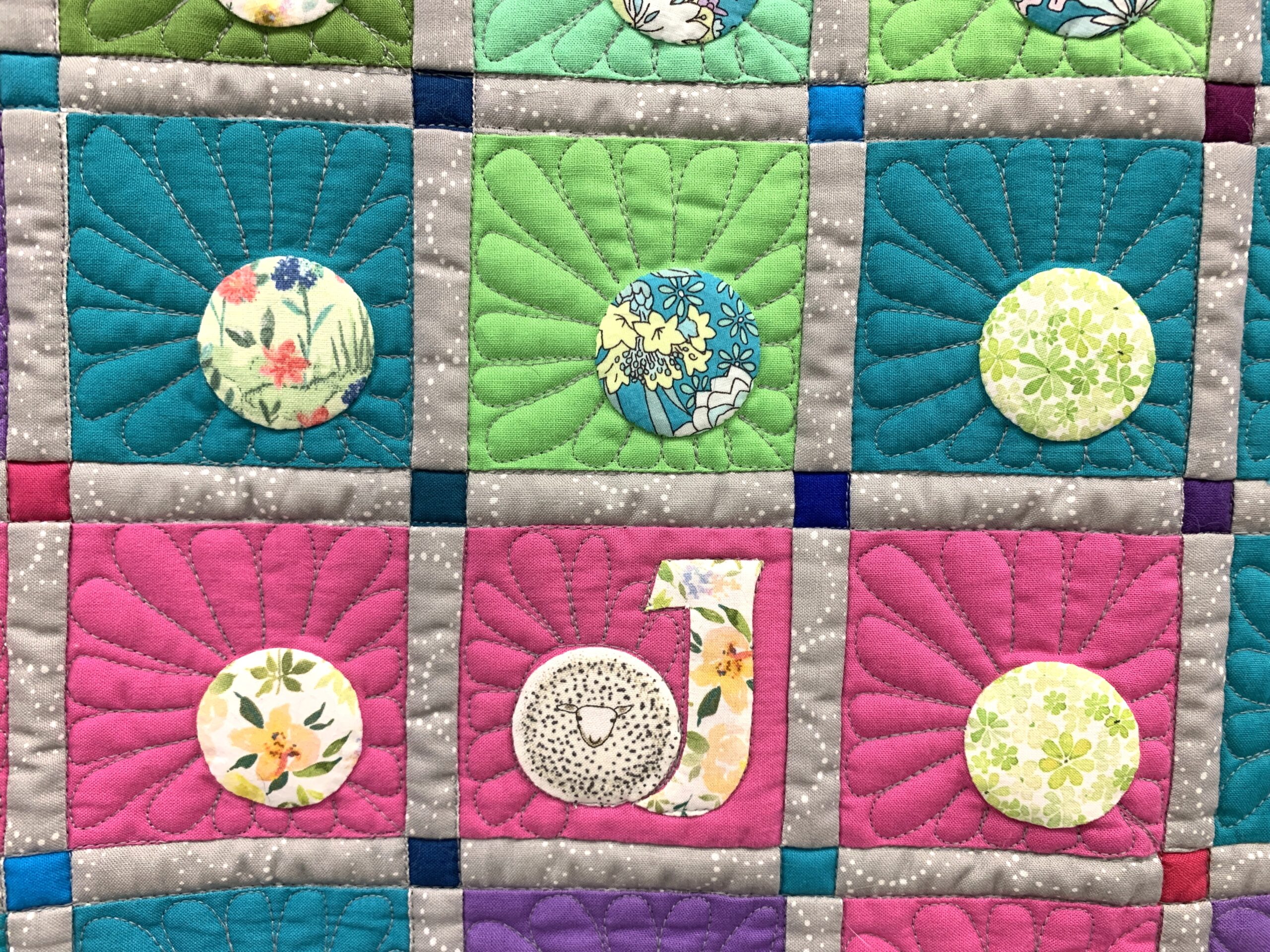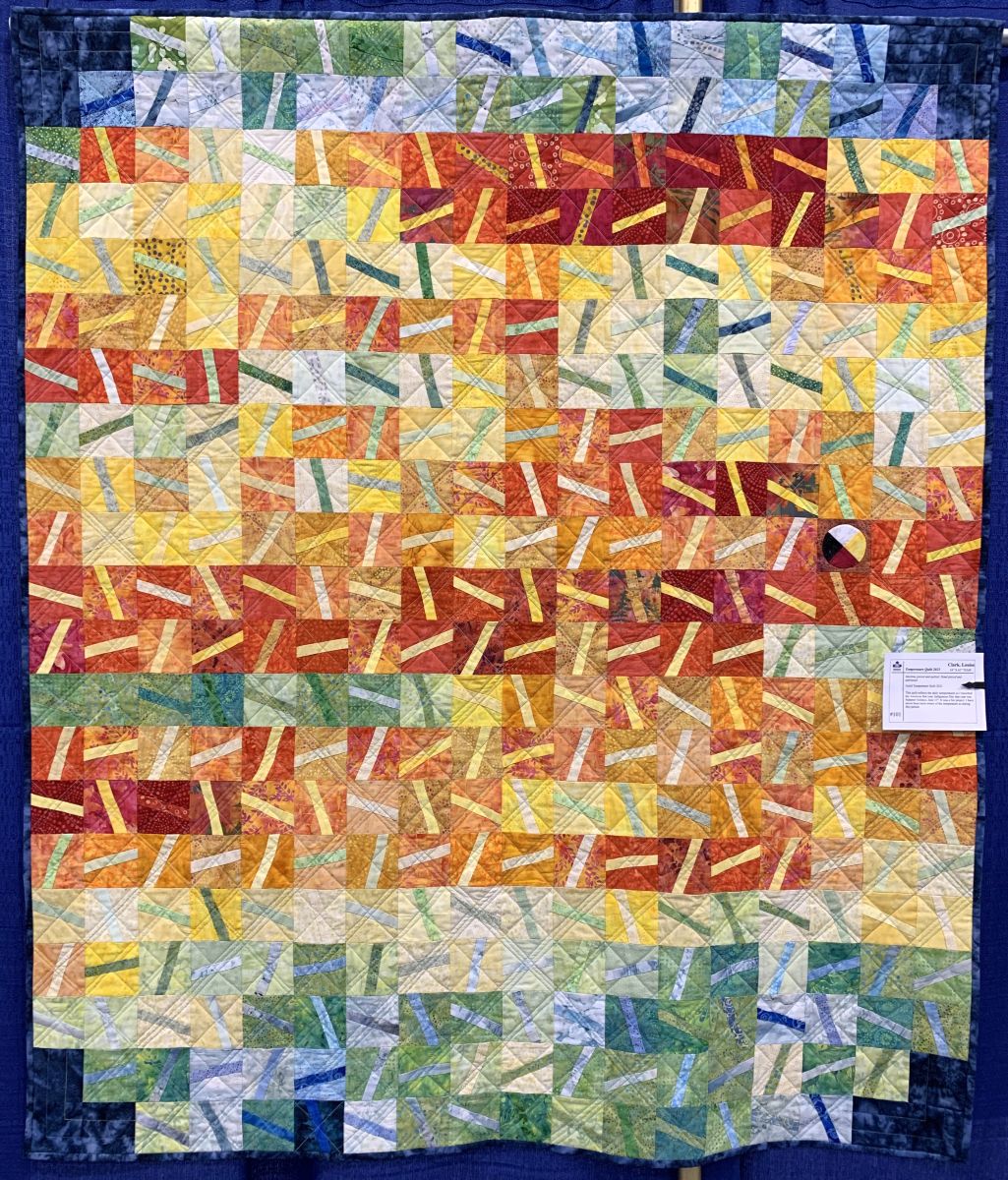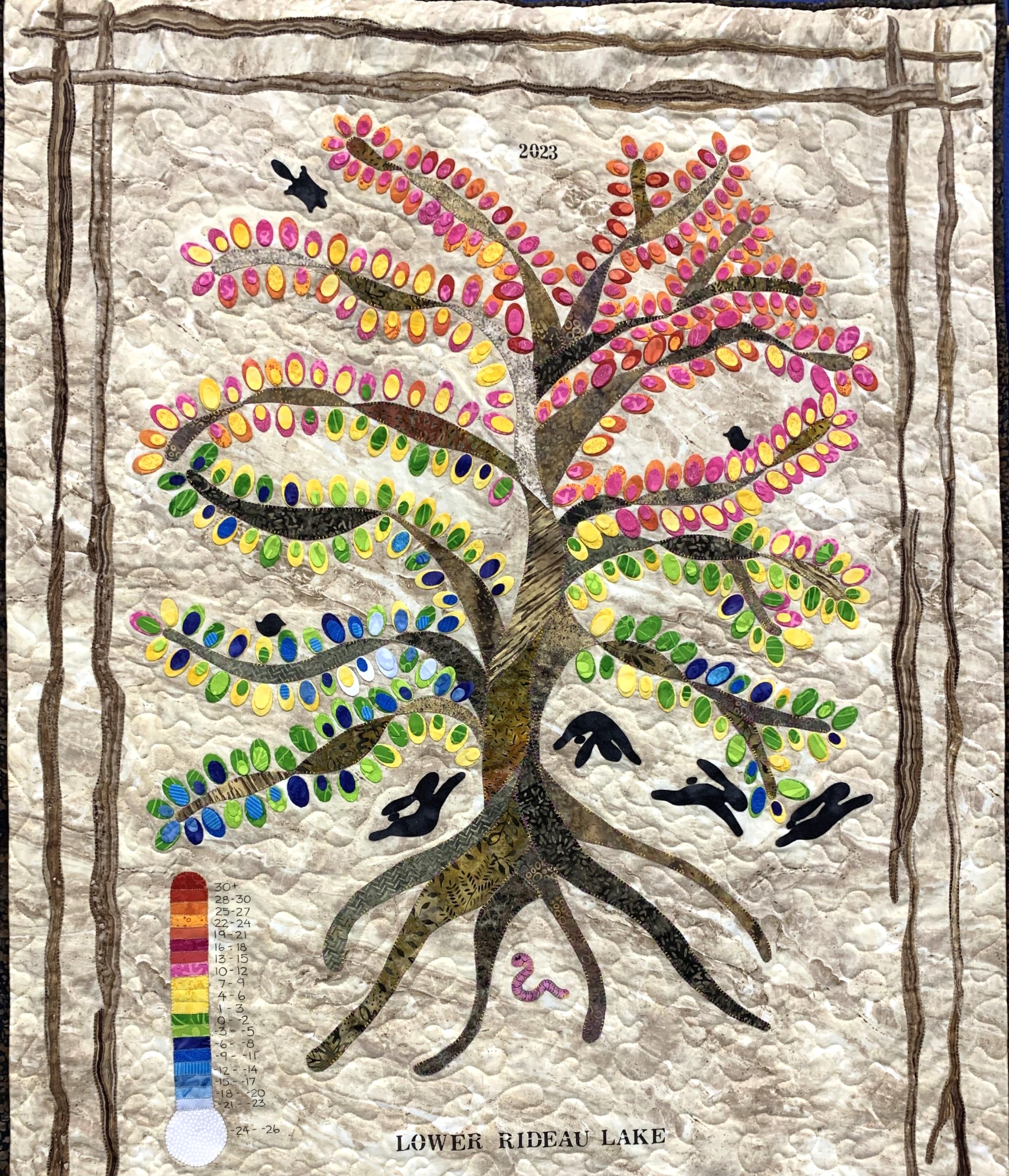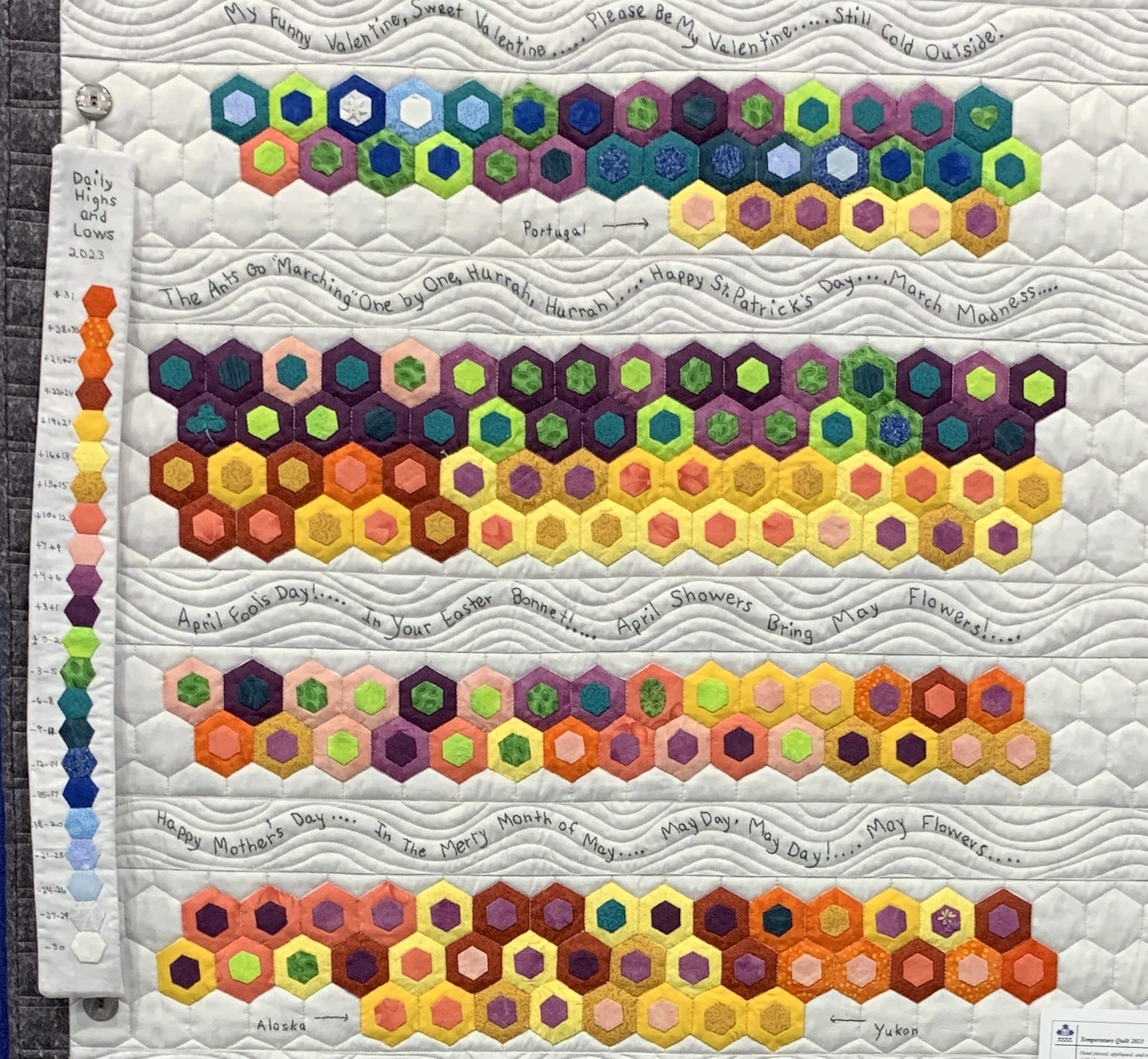In the midst of a scorcher of a summer, it seems fun to take a look at some temperature quilts. In 2022, Kim Caskey taught a class on this approach at Quilts Canada. This inspired some guilds to make it into a challenge the following year.
What is a Temperature Quilt?
A temperature quilt chronicles the everyday temperature of a certain location for an entire year. Artists often decide to use a design with 365 blocks – one for each day. Some also include a guide to show how the colours align with the weather.
First, the stitcher assigns a certain colour or pattern to specific temperatures. Next, they create a design to showcase the weather patterns for that year.
These quilts can take shapes as columns or calendar blocks – whatever works for the brain behind it. These three examples show vastly different approaches by members of the Lanark County Quilters Guild on July 10 and 11.
Christine Piche credits project leader Mary Cunningham for spearheading this challenge.
“She did an admirable job keeping us motivated with regular Zoom chats to exchange ideas and encourage one another,” she says. Her quilt is the one you see at the top of the page.
“This was a very exciting and challenging project from choosing a theme and selecting fabrics and staying on track.”
In between her rows of hexagons within hexagons, she added wavy text related to each season. For example, she mentioned the arrival of ants in the spring and landmarks days, like April Fool’s Day and Mother’s Day.

Year In, Year Out
Carol Darou’s artistry dominated this show, especially her work as its Featured Quilter. She also quilted many other artists’ pieces that were on display.
For her temperature quilt, she found herself buying more of certain fabrics and less of her initial purchases!
She chose to make the background of each block the high and the circle inside representing the low. For significant family birthdays, she added a little sheep.
At 73 inches by 82 inches, this quilt was machine pieced, embroidered and hand appliquéd. She quilted it with a long-arm machine.

Reflecting the Summer Solstice
“I have never been more aware of the temperature as during this period,” wrote Louise Clark.
She kept track of the numbers while traveling around the Americas in 2023. Each month turned into rows of square blocks with a slash of colour.
She also learned that National Indigenous Day falls on the Summer Solstice.
In addition to her newfound awareness, Louise described this project as a fun one. She hand pieced and appliquéd her blocks, along with machine piecing and quilting.

Lower Rideau Lake 2023 Temperature Quilt
Having seen so many designs, Ruth Wilson wanted to do something different. She decided that each branch would represent one month. Further, each leaf indicates the high and low temperatures of the day.
The January branch began the bottom left and subsequent months went up and around clockwise. Meanwhile, the first leaves of each cycle started at the trunk and traveled to the end of the branch then back.
“We had a flying squirrel in the neighbourhood that year, as well as rabbits and birds,” Ruth wrote. Look for the little black figures that represent them.
Her piece is 34 inches by 44 inches. She appliquéd the leaves and branches by hand then machine quilted the project.
Want to create a Temperature Quilt of your own?
If you feel inspired, you can start collecting your fiery and cool fabrics now. For more guidance, here are a few resources:
In this video, join quiltmaker and teacher Terry Rowland of Alberta. First, she picks colours for each temperature range and designing the blocks.
In a follow-up, she creates a block layout and walks you through next steps.
For more ideas, you can also enjoy this video by Stitch with Rachel. Have fun and stay cool!


